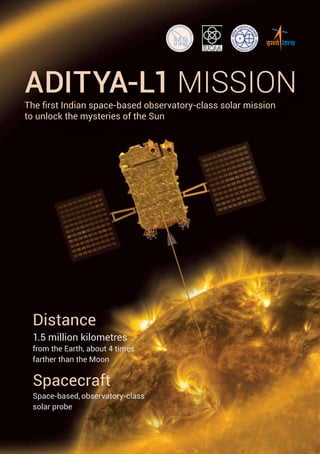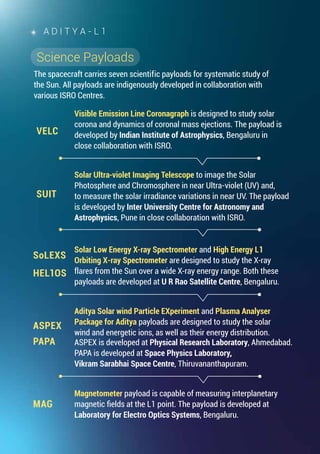The Aditya-L1 mission is India's first space-based solar observatory, designed to study the sun by orbiting the Lagrangian point 1 (L1), approximately 1.5 million kilometers from Earth. It will carry seven scientific payloads to continuously observe solar activities, including coronal heating and solar wind dynamics. The mission aims to enhance understanding of solar phenomena such as coronal mass ejections and their effects on space weather, with a planned launch using the PSLV XL rocket by ISRO.













